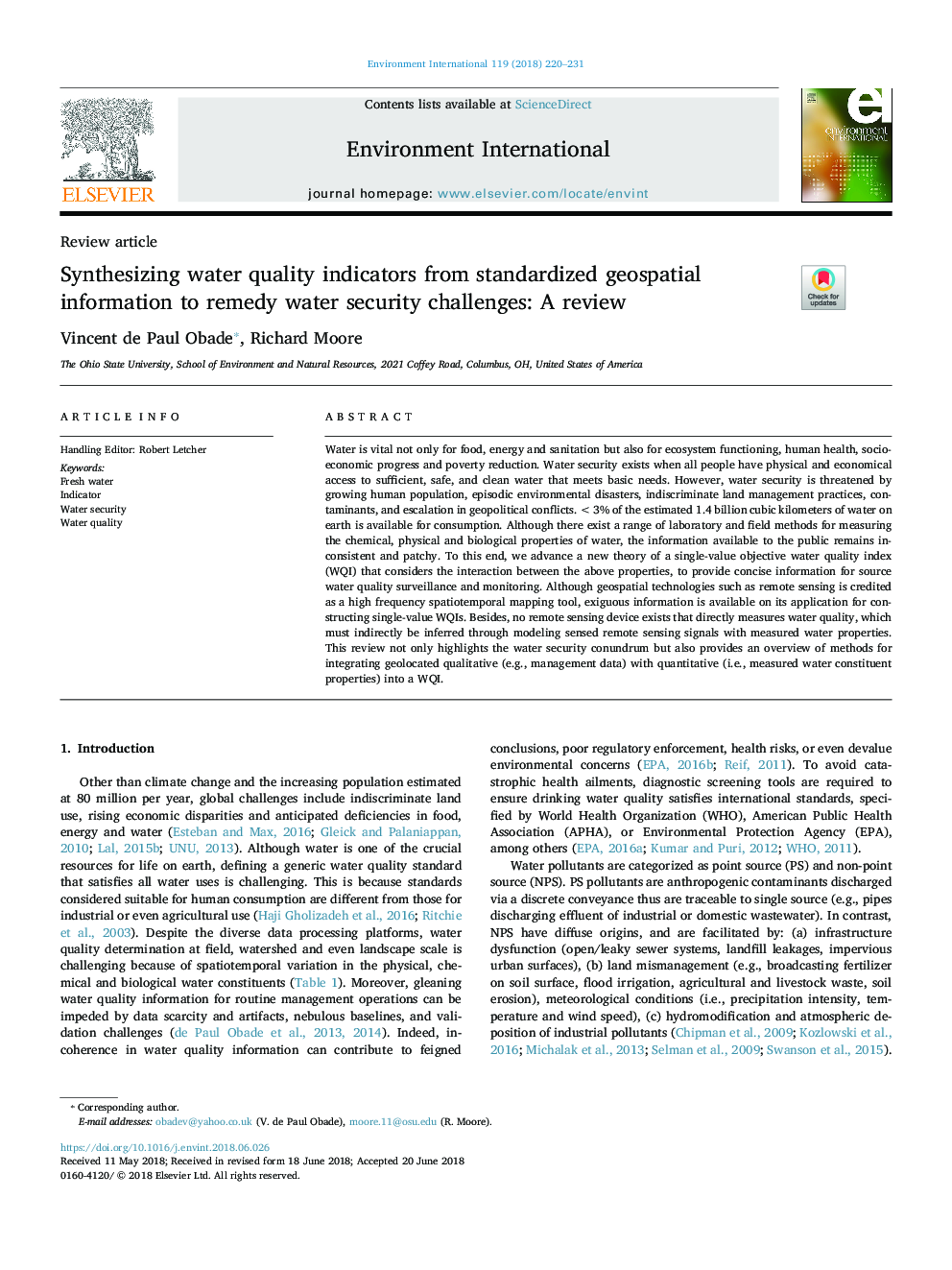| Article ID | Journal | Published Year | Pages | File Type |
|---|---|---|---|---|
| 8854961 | Environment International | 2018 | 12 Pages |
Abstract
Water is vital not only for food, energy and sanitation but also for ecosystem functioning, human health, socio-economic progress and poverty reduction. Water security exists when all people have physical and economical access to sufficient, safe, and clean water that meets basic needs. However, water security is threatened by growing human population, episodic environmental disasters, indiscriminate land management practices, contaminants, and escalation in geopolitical conflicts. <3% of the estimated 1.4â¯billionâ¯cubicâ¯kilometers of water on earth is available for consumption. Although there exist a range of laboratory and field methods for measuring the chemical, physical and biological properties of water, the information available to the public remains inconsistent and patchy. To this end, we advance a new theory of a single-value objective water quality index (WQI) that considers the interaction between the above properties, to provide concise information for source water quality surveillance and monitoring. Although geospatial technologies such as remote sensing is credited as a high frequency spatiotemporal mapping tool, exiguous information is available on its application for constructing single-value WQIs. Besides, no remote sensing device exists that directly measures water quality, which must indirectly be inferred through modeling sensed remote sensing signals with measured water properties. This review not only highlights the water security conundrum but also provides an overview of methods for integrating geolocated qualitative (e.g., management data) with quantitative (i.e., measured water constituent properties) into a WQI.
Related Topics
Life Sciences
Environmental Science
Environmental Chemistry
Authors
Vincent de Paul Obade, Richard Moore,
